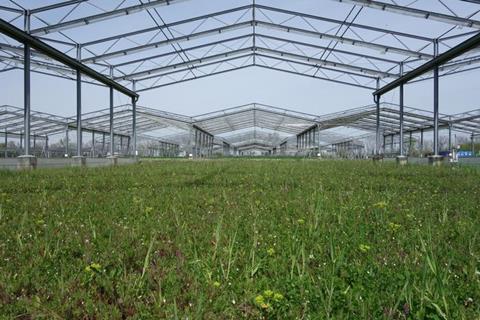Compared to intensive land use, sustainable land use allows better control of underground herbivores and soil microbes. As a result, the soil ecosystem is more resilient and better protected from disturbance under sustainable management than under intensive land use.

Researchers from Leipzig University, the German Centre for Integrative Biodiversity Research (iDiv) Halle-Jena-Leipzig and other research institutions found that the total energy flux and the activities of so-called decomposers, herbivores and predators in the soil food web remained stable. They have just published their paper in the journal Global Change Biology.
However, compared to intensive land use, sustainable land use led to higher activity of microbivores and greater control of microorganisms by them. This means that small predators such as nematodes regulate the populations of microorganisms and keep them in balance.
Future climate conditions
Using the experimental design of the Global Change Experimental Facility (GCEF) at the Helmholtz Centre for Environmental Research (UFZ), the researchers were able to show that this regulation was also maintained under future climate conditions. In addition, the control of herbivores by natural predators was generally more pronounced in sustainably managed cropland and grassland areas. This is important because excessive reproduction by herbivores can significantly affect plant growth and therefore productivity.
READ MORE: Researchers improve climate predictions by unlocking secrets of soil microbes
READ MORE: Climate change alters the hidden microbial food web in peatlands
“Our findings show the potential benefits of less intensive and more sustainable land management for the functioning of soil food webs – both today and in a changing climate,” says the first author of the paper, Marie Sünnemann, from the Institute of Biology at Leipzig University and iDiv.
Climate change and more intensive land use are threatening soil organisms and their important tasks – known as ecosystem functions. To understand how intensive and sustainable land use affects the diversity of soil organisms in cropland and grassland – now and in the future in the context of climate change – the researchers studied these influences in a field experiment.
Effects of warmth and drought
In their experiment, they analysed the effects of warming and summer drought on soil organisms under both intensive and sustainable land use. These included microorganisms such as bacteria and fungi, but also nematodes, springtails, mites and larger animals such as beetles, spiders, millipedes and centipedes.
“Our focus was on the energy cycles in the soil food web – meaning the energy that is passed on from decomposers and herbivores to small predators,” says co-author Professor Nico Eisenhauer from iDiv.
This energy transfer was used by the researchers as an indicator of how well the main groups such as decomposers, microbivores, herbivores and predators were performing their respective functions in the ecosystem: decomposers break down organic matter and make the soil fertile. The role of microbivores includes preventing harmful fungi from multiplying en masse. For their part, predators control the numbers of herbivores such as aphids, helping to prevent crop losses.







No comments yet